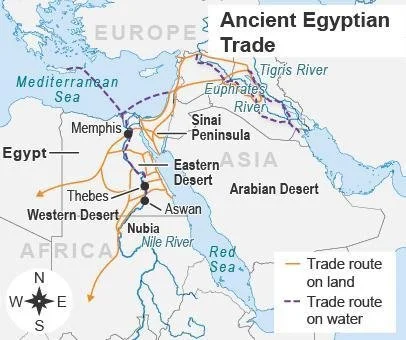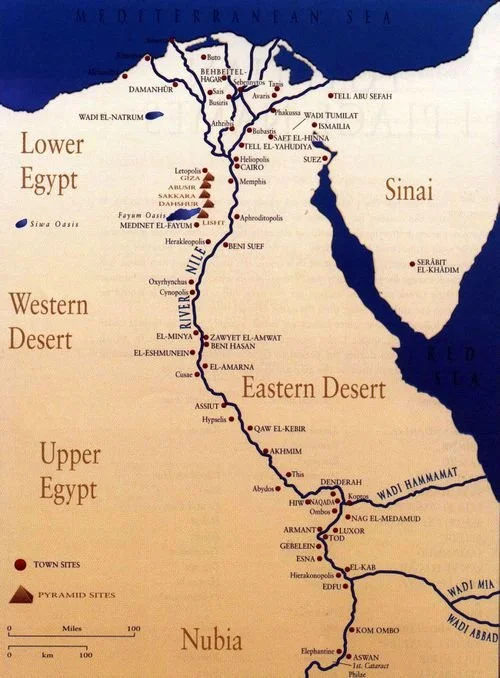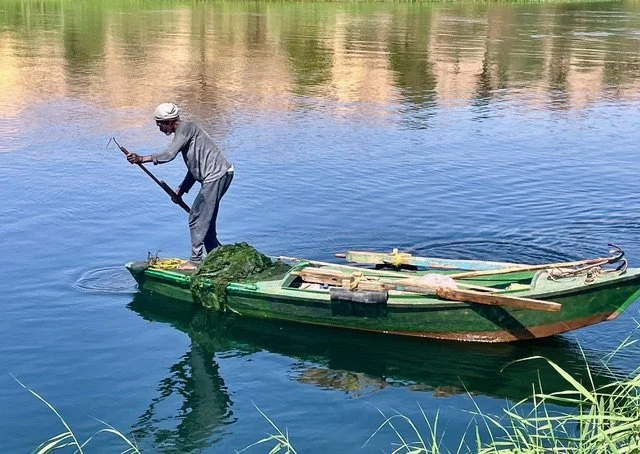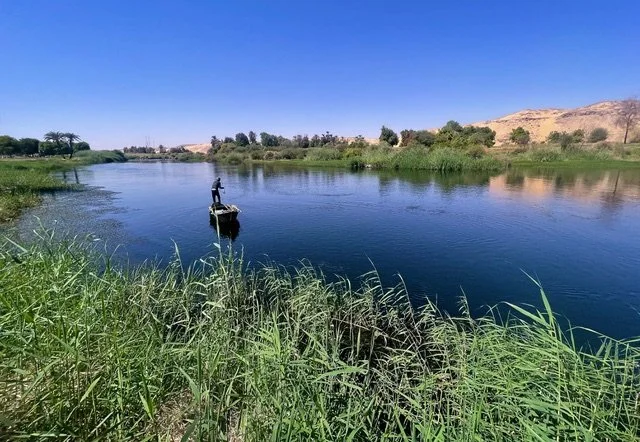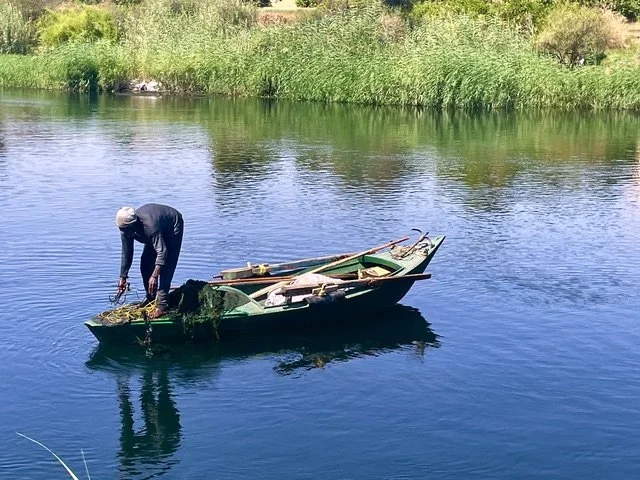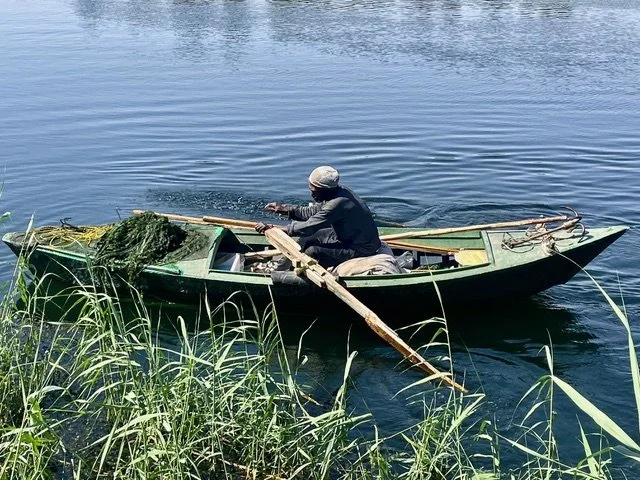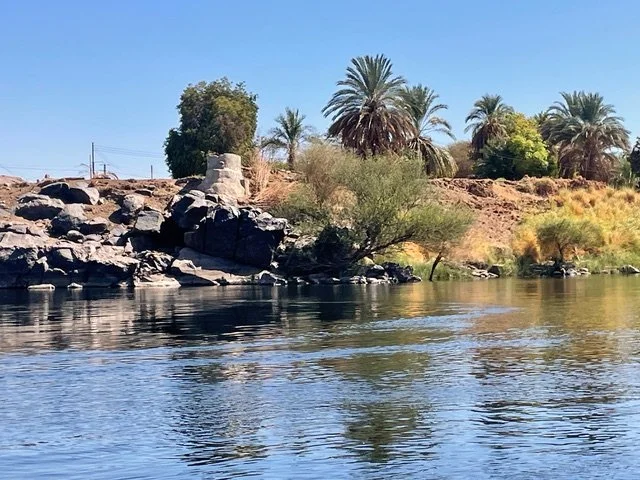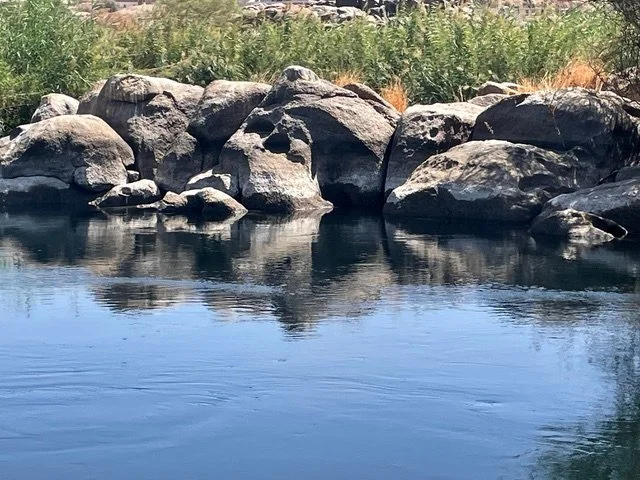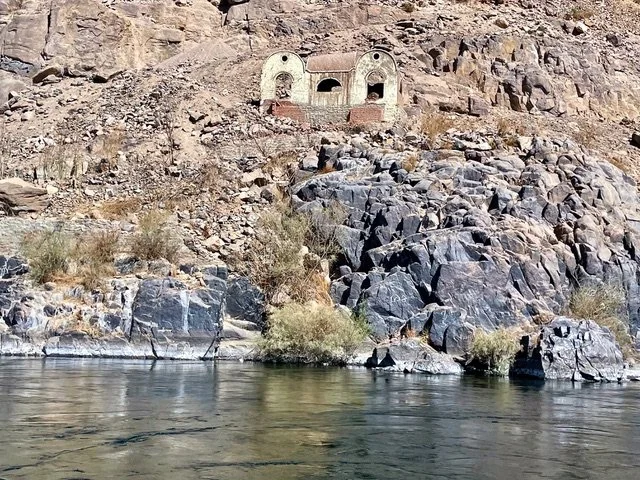Ancient Egyptian Trade Routes
All through antiquity, Egyptian trade routes were the arteries interconnecting a vast network of cultural and economic exchange. The origins of trade can be traced to prehistoric Saharan tribes (prior to 3200 BCE) who constructed trade routes far into Africa, Asia, and the Fertile Crescent. These networks consisted of maritime and land routes, which expanded into the Mediterranean, sub-Saharan Africa, and the Red Sea. The most important methods of importing and exporting agricultural commodities for predynastic Egyptian settlements were the use of camels and carved reed boats.
-
Ancient Egypt was a pivotal link between China and Rome along the oldest known land trade network (called the Silk Road). This tribal trans-Saharan Desert route imported goats and sheep and spread prehistoric agricultural practices from the Indus Valley. Camels were in constant use, carrying heavy cargo to Nubia, Egypt’s southern neighbors, and as far as China. Desert nomad tribes exerted their knowledge of bartering and became powerful merchants within African and Middle Eastern Silk Road settlements. Desert camel caravans were key to the tremendous economic growth of these ancient Egyptian tribes. Camels were vessels that walked the land routes of a vital supply chain stretching from India, Africa, Europe, Asia, and Asia Minor. Gold, salt, animals, and animal skins from West Africa were of utmost interest to Egyptian traders as well as to their Roman counterparts.
-
Heavy packages mounted on camels were shipped from distant locations to settlements and urban centers, providing valuable information on developments in agriculture and commerce. These exchanges commenced the early establishment of informational networks across the world.
-
The Nile River was a natural waterway hub that was used for transporting large amounts of commodities for early Egyptians. The inhabitants of the settlements who dwelled along the Nile constructed primitive narrow boats made of papyrus reeds for carrying goods. For extended shipping to remote locations, robust wooden boats were created for exporting and importing huge amounts of precious metals.
-
During the First Dynasty, Egyptians expanded their civilization with the construction of trading ports which linked the Nile and the Red Sea. The ancient port settlement of Alexandria (Mediterranean Sea) became geographically a major trading thoroughfare linking Rome (Europe) with Africa along the Silk Road.
Cultivating Papyrus
Granite Cataract Formations
Cataracts are ancient boulders found along the Nile river
Villages flourishing near Nile
Compare and contrast the old architecture from the ancient times to current buildings.

~ CRITICAL THINKING ~
Define an important ingredient of prehistoric government
The administration of agricultural territories by organized tribal settlements that flourished near river valleys.
STUDY QUESTIONS
What social characteristics structure a civilization?
Key advances in shelter construction, food production, and stable systems of government provided early humans with the ability to establish cooperative urban societies. Progress and growth both culturally and politically led these desert inhabitants to evolve toward advanced river port settlements.
What is a trade route?
A pathway that traders navigated to exchange goods and information with distant foreign civilizations.
Ancient Water Supply
This invaluable resource was the key element of agricultural growth throughout Neolithic cultivated regions.
Study Questions
-
Without a reliable source of natural fresh water, prehistoric river settlements would not have been able to thrive. Fresh water usually flooded the Nile River Valley every year, releasing boundless amounts of nutrients into the Egyptian soil. Water helped fertilize the nearby hot, dry, barren landscape.
Nile River farming settlements rejoiced during expected spring and summer rains and flooding periods. The presence of water was essential to the growth of prehistoric farming, fishing, and animal domestication. Flooding river water provided much-needed nutrition to the crops that were required to feed domesticated animals. Water lured hunter and gatherer nomads toward urban river trading centers. However, in rainless drought periods, famine and starvation overwhelmed these ancient settlements.
-
Water was an important element in the cultivation of a vast fertilized terrain along the Nile River Valley. From the Nile River, farmers mobilized floodwaters with a canal system, which allowed water to enter farther into the Sahara's dry arid region. With the expansion of the canal system, offering fresh water for crop irrigation as well as consumption, food production, and other daily lifestyle necessities improved and the population thrived.
Prehistoric Egyptian farmers devised a highly efficient device, called the shadoof, which lifted water from a lower level to a higher one. Most importantly, farmers no longer had to lift heavy water buckets by hand. The device utilized a bucket attached to a long wooden pole, which was dropped into a canal or another water source. A counterweight (similar to a seesaw) on the opposite side of the pole effortlessly raised the water, which was then distributed to irrigation channels or directly onto crop fields. This device is still used today in Africa and Asia. In some regions, water entered a fabric and sand filtration system before its use. This yielded more agricultural productivity and improved the health of farmers. The shadoof also gave planters opportunities to store additional water in canals and dammed up areas.
